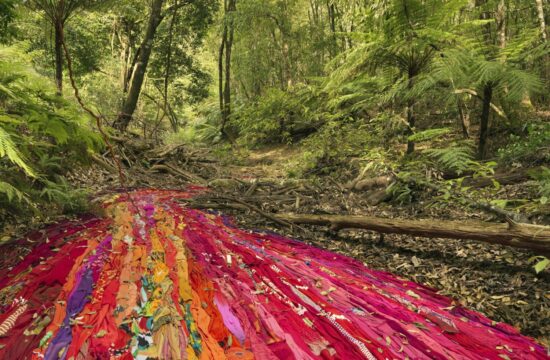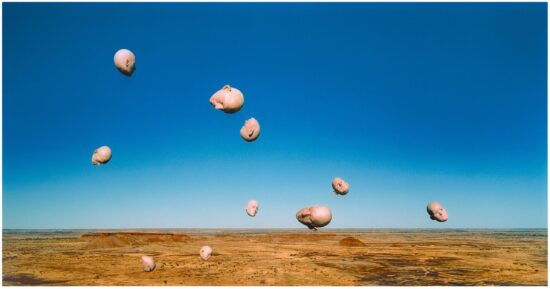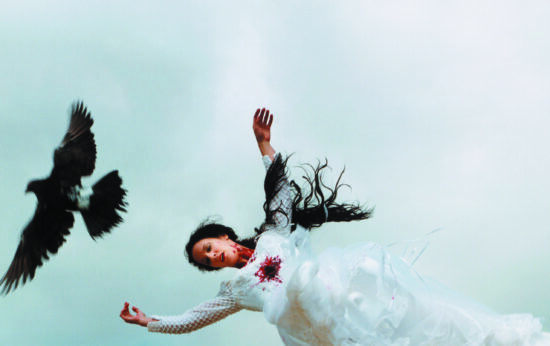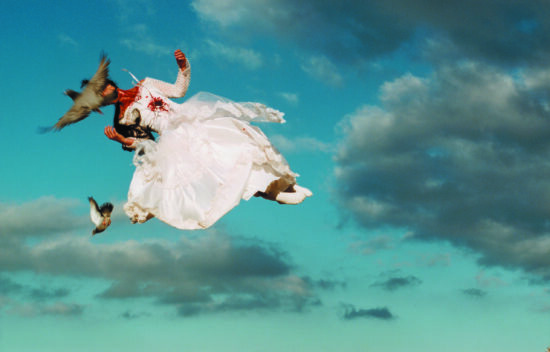Rosemary Laing (1959-2024) was a pioneering Australian artist whose extraordinary photographic practice challenged conventional boundaries between performance, installation, and photography. Over her four-decade career, Laing developed a distinctive approach that rejected digital manipulation in favor of meticulously orchestrated real-world installations and performances, captured through her lens in culturally significant Australian landscapes.
Laing’s work was characterized by its ambitious scale and cinematic vision, often exploring complex themes of colonialism, land ownership, and cultural memory in Australia. Her photographs, typically created in series, operated as both documentary evidence and poetic meditation, revealing how historical narratives continue to shape contemporary experience. Through her careful selection of historically charged locations and her innovative use of physical interventions in the landscape, Laing created powerful visual metaphors that spoke to both local and universal concerns.
Her artistic contributions have been recognized through inclusion in major international exhibitions, including the Venice Biennale (2007), Biennale of Sydney (2008), and Busan Biennale (2004). Laing’s work has been the subject of solo exhibitions at prestigious institutions worldwide, including the Museum of Contemporary Art Australia, National Museum of Art Osaka, and the Frist Center for the Visual Arts. Her photographs are held in numerous distinguished collections, among them the Art Institute of Chicago, Museo Nacional Centro de Arte Reina Sofía, and the National Gallery of Australia.
In 2019, Laing received the Overseas Photographer Award at the 35th Higashikawa International Photography Festival, recognizing her significant contribution to contemporary photography. Her legacy endures through her powerful body of work, which continues to provoke critical dialogue about landscape, history, and cultural identity in the modern world.




